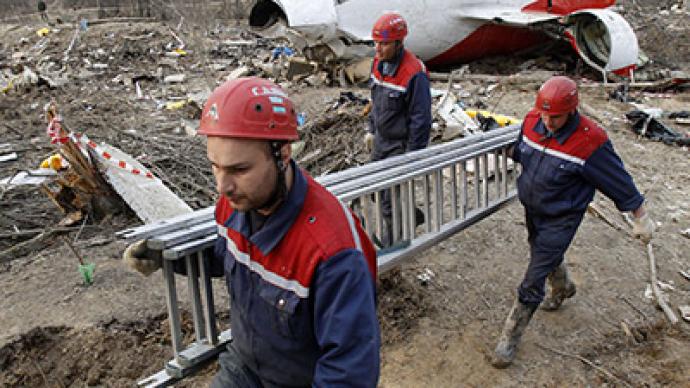Smolensk crash victim families received wrong bodies

The plane crash in Russia that killed Polish President Lech Kaczynski and 95 others back in 2010 may once again stir controversy as two families in Poland discover that bodies they received for burial had been swapped.
Polish prosecutors announced the finding Tuesday, with DNA test results having been confirmed by two independent labs.The two bodies were exhumed the previous week after examinations of postmortem documents received from Russia discovered several inconsistencies. The errors sparked concerns that the victims’ remains may have been passed on to Poland incorrectly.
The Smolensk plane crash took place on April 10, 2010. It involved a Polish-operated Tupolev-154, which was carrying seven crew members and 89 passengers including then-President of Poland Lech Kaczynski, his wife, almost all of the country's top military staff as well as civic and religious figures. The delegation was heading to western Russia to commemorate the 70th anniversary of the slaughter of thousands of Polish nationals by the Soviet secret police in a forest near the village of Katyn. During a landing attempt at Smolensk-Severny Airport, the plane came down after hitting a tree, killing everyone on board. The crew’s visibility was severely restricted by a dense fog.
"The prosecutor's office is also looking into the issue of exchanging the bodies, and is investigating the evidence from this angle," said Colonel Zbigniew Rzepa, a spokesman for the military prosecutor's office.One of the swapped bodies belongs to Anna Walentynowicz, an activist from the Solidarity trade union widely regarded at home as the “mother of independent Poland."The other body may be of scientist and civic activist Teresa Walewska-Przyjalkowska, Polish media speculate.The Polish prosecutors’ office is now considering exhuming at least four more bodies from the crash.It's not the first time the remains of Smolensk crash victims have been exhumed. The entire investigation, including the identification of bodies, was carried out in Russia with Polish representatives observing the process. The families of several politicians, however, insisted on independent expertise after their relatives were buried.On April 10, 2010, President Lech Kaczynski, much of his cabinet and several civil activists were heading to the Katyn memorial near the western Russian town of Smolensk. They were going to attend a ceremony commemorating the mass executions of Poles carried out by Soviet troops during World War II. In a dense fog, the plane went down, hitting a tree during a landing attempt at Smolensk's airport. As the investigation proceeded, the crash began to threaten a new discord in relations between Moscow and Warsaw.The Interstate Aviation Committee and Muscovite investigators blamed the tragedy on the plane's crew. Some circles in Poland met the finding with outrage, accusing Moscow of shirking responsibility. Nevertheless, Warsaw finally accepted the IAC’s official version of events. But many Poles still believe that Russian air traffic controllers should not have allowed a landing attempt in such bad weather conditions. Some groups also accuse the Russian and Polish governments of being at least partially behind the tragedy.













